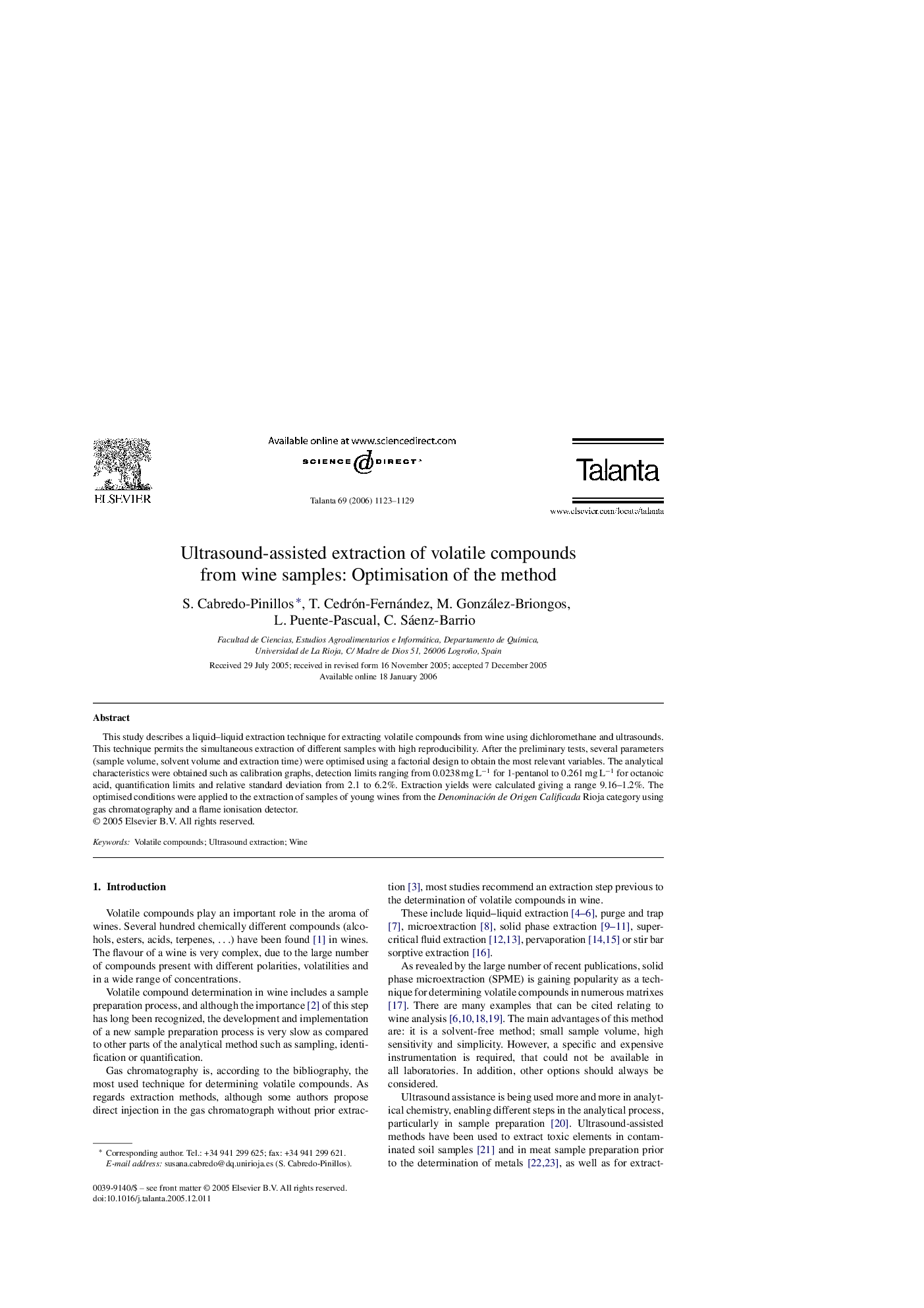| Article ID | Journal | Published Year | Pages | File Type |
|---|---|---|---|---|
| 1245681 | Talanta | 2006 | 7 Pages |
This study describes a liquid–liquid extraction technique for extracting volatile compounds from wine using dichloromethane and ultrasounds. This technique permits the simultaneous extraction of different samples with high reproducibility. After the preliminary tests, several parameters (sample volume, solvent volume and extraction time) were optimised using a factorial design to obtain the most relevant variables. The analytical characteristics were obtained such as calibration graphs, detection limits ranging from 0.0238 mg L−1 for 1-pentanol to 0.261 mg L−1 for octanoic acid, quantification limits and relative standard deviation from 2.1 to 6.2%. Extraction yields were calculated giving a range 9.16–1.2%. The optimised conditions were applied to the extraction of samples of young wines from the Denominación de Origen Calificada Rioja category using gas chromatography and a flame ionisation detector.
